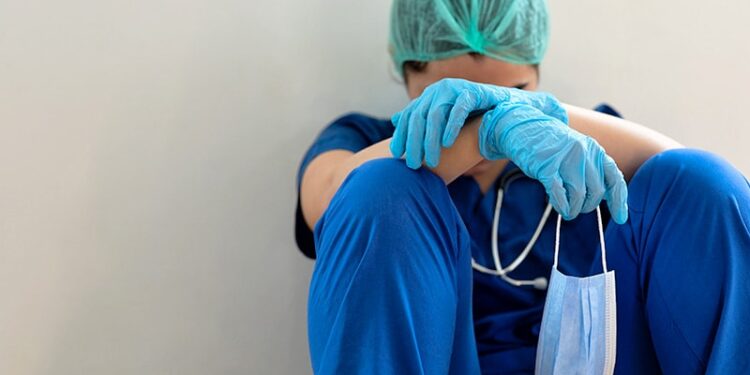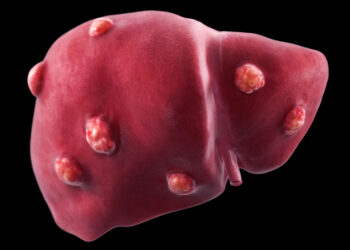Suicide rates among residents have remained steady since the turn of the century despite increased attention to physician mental health, a new study found.
However, residents — like physicians in general — continue to be much less likely to kill themselves than nonphysicians.
The suicide rate among medical residents was 4.89 per 100,000 person-years from 2015 to 2021 (47 people) vs 4.07 per 100,000 person-years from 2000 to 2014 (66 people), reported Nicholas A. Yaghmour, MPP, of the Accreditation Council for Graduate Medical Education (ACGME) in Chicago, and colleagues in JAMA Network Open. The difference was not statistically significant.
In contrast, the rate of cancer deaths among residents declined by nearly 40% from 2000-2014 to 2015-2021 (incidence rate ratio [IRR], 0.59; 95% CI, 0.38-0.90; P < .05).
Overall, suicides among medical residents remain very rare. According to the study, they’re 70% less common in the 30- to 34-year-old age group than in the age-matched general population.
Still, “a resident or fellow death by suicide is a devastating event that harms patients, peers, attending physicians, and clinical staff,” Yaghmour told Medscape Medical News.
Suicide Trends Are Difficult to Track
The study updates a 2017 report by the same team that examined resident deaths from 2000 to 2014. For both reports, researchers tracked deaths in ACGME-accredited residency and fellowship programs, which are required to account for trainees who depart, and consulted a federal database and other sources for information about causes of death.
During the 2015-2021 period, 161 residents and fellows died while in training (111 men and 50 women). Suicide was the most common cause, accounting for 29.2% of deaths (47 total: 35 men and 12 women).
The researchers didn’t find higher numbers of suicides during the COVID-19 pandemic period.
The number of suicides tracked by the new report is small, making it difficult to detect trends, said Douglas Mata, MD, MPH, a Boston pathologist who studies physician mental health but was not involved in the research.
Still, “we can likely conclude that suicide rates have not meaningfully decreased, which is a concerning finding that warrants further study,” he told Medscape Medical News.
The study noted that residents are much less likely than the rest of the population to die by suicide. For the entire period from 2000 to 2021, the rate of suicide among residents aged 30-34 years was less than a third of the rate among the comparable general population (IRR, 0.27; 95% CI, 0.20-0.35; P < .05).
As for physicians overall, it’s been widely reported that they’re at twice the risk for suicide compared with their nonphysician peers. But a 2025 JAMA Psychiatry study reported that male physicians were less likely to die by suicide than men in their general population. Female physicians, however, had a higher suicide rate than their female peers.
Residents Are Much Less Likely to Die of All Causes Than Peers
From 2000 to 2021, residents aged 30-34 years were much less likely to die than the age-matched general population (IRR, 0.12; 95% CI, 0.11-0.14; P < .05), the report found.
Cancer was the second most common cause of death among residents at 17.4% (28 total: 14 men and 14 women), followed by accidental poisoning at 13.0% (21 total: 19 men and 2 women) and accidents at 13.7% (22 total: 16 men and 6 women).
The dip in cancer rates could reflect improvements in healthcare services for residents and better overall cancer outcomes, Yaghmour said.
By comparison, in 2021, accidents were the top cause of death in the United States for people aged 25-44 years based on age-adjusted mortality rates, followed by COVID-19, heart disease, suicide, and cancer, according to the Centers for Disease Control and Prevention.
Rising Stress, Heavy Workloads
Among the suicides of 43 residents (excluding fellows), nine occurred during the first 3 months of the first year of residency. Another six happened during the final quarter of the second year.
Mata said the findings about suicide timing make sense.
“The first quarter of the intern year brings isolation, exhaustion, anxiety, and the shock of entering clinical practice — often while moving to a new city with no friends or family support,” Mata said. “The fourth quarter of PGY-2 brings new stressors: Rising clinical responsibility, career planning pressures, and, in some cases, worsening burnout.”
Sen, who experienced depression himself and lost a close friend to suicide during residency, said workload is “far and away” the biggest contributor to depression during training. “If we can create a healthier system, we could reduce the number of people who get depressed.”
Mata agreed, pointing to predictable stressors in residency, including long work hours, sleep deprivation, lack of control over schedules, and the high-stakes nature of patient care.
“As a resident, you are continually being thrown onto new clinical services, trying to meet the expectations of new attendings, and encountering unfamiliar diseases,” Mata said.
Intervening for Well-Being
Mata emphasized that suicide rates alone may not be the best metric for measuring well-being interventions. More sensitive indicators, like rates of screening positive for depression or job satisfaction surveys, would better detect improvements, he said.
However, suicide rates remaining stable worries Mata.
“This finding suggests that surface-level wellness efforts alone aren’t enough and that continued structural reforms could be considered,” he said.
“These things often cost money, so there’s resistance in medicine to doing that,” he noted.
Mata recommended a back-to-basics approach: “Enforce reasonable work hours, protect time for sleep, provide easy access to confidential mental healthcare, foster supportive program cultures, and normalize seeking help.” He highlighted a 2016 study that estimated only 16% of medical students who screen positive for depression seek help.
“Residency demands are inherently stressful because becoming a doctor carries enormous responsibility,” he said. “Real change will require creating cultures where vulnerability is not treated as a liability, and where seeking help is seen as a sign of strength, not weakness.”
No study funding was reported. Yaghmour, Mata, and Sen had no disclosures.
Source link : https://www.medscape.com/viewarticle/suicide-remains-leading-cause-death-among-medical-residents-2025a1000cpk?src=rss
Author :
Publish date : 2025-05-20 12:36:00
Copyright for syndicated content belongs to the linked Source.














